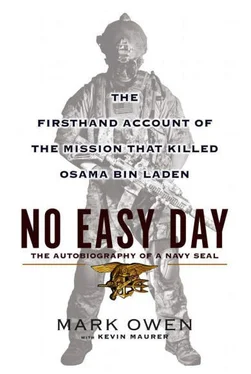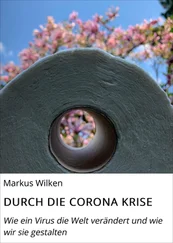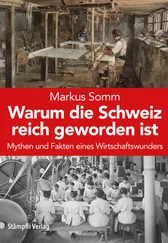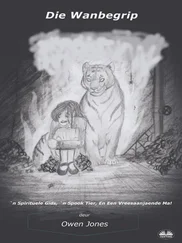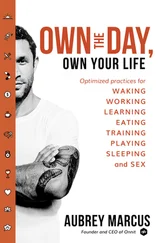Breakfast, check.
Brushed my teeth, check.
Back in my room, I stuffed my toothbrush back into my backpack.
I’d already laid out my Crye Precision Desert Digital combat uniform. Designed like a long-sleeved shirt and cargo pants, the uniform had ten pockets, each with a specific purpose. The shirt was designed to wear under body armor. The sleeves and shoulders were camouflaged, but the body of the shirt was tan and made of a lightweight material that wicked sweat away. I’d chopped the sleeves off of my shirt because it was hot.
Sitting on my bed, I started to get dressed. Nothing I did from the moment I started putting on my pants was random.
Every step was carefully planned.
Every check was a way to focus and make sure I didn’t forget anything.
These were the same steps I did before every mission.
Before I slid my pants on, I rechecked each pocket on my uniform.
In one cargo pocket, I had my assault gloves and leather mitts for fast-roping. The other cargo pocket had an assortment of extra batteries, an energy gel, and two power bars. My right ankle pocket had an extra tourniquet and my left one had rubber gloves and my SSE kit.
In a pocket on my left shoulder, I felt the $200 cash I’d use if we got compromised and I needed to buy a ride or bribe someone. Evasion takes money, and few things work better than American cash. My camera, a digital Olympus point-and-shoot, was in my right shoulder pocket. Running along the back of my belt, I had a Daniel Winkler fixed blade knife.
I tucked my shirt in and picked up my kit and inspected it again. The ceramic plates covered my vital organs in the front and back. I had two radios mounted on either side of the front plate. Between the radios, I carried three magazines for my H&K 416 assault rifle and one baseball-size fragmentation hand grenade. I also had several chemical lights rigged to the front of my vest, including the infrared version that can only be seen using night vision. We’d crack the plastic lights and throw them in front of rooms and areas that we had cleared. The lights were invisible to the naked eye, but my teammates could see them through their night vision and know what areas were secure.
My bolt cutters rode in a pouch on my back, with the two handles sticking a little ways above my shoulder. Attached to my vest were the two antennas for the radios.
Running my hands over my kit, I tugged on the breaching charge I rubber-banded to the back of it. I next focused on my helmet. It weighed less than ten pounds with the night vision goggles attached. It could officially stop a nine-millimeter round, but in the past the helmets had stopped AK-47 bullets. I switched on the light attached to the rail system that runs down the side of the helmet. It was a brand-new Princeton Tec charge light. I’d used it in my last deployment.
I set the helmet on my head and pulled down my night vision goggles, or NVGs. Unlike some of the conventional units, we had NVGs with four tubes instead of the usual two. This allowed us a field of view of 120 degrees instead of just 40 degrees. The standard goggles were like looking through toilet-paper tubes. Our NVGs allowed us to clear corners more easily and gave us greater situational awareness. Switching on the $65,000 goggles, my room was bathed in a green hue. With a few adjustments, I could see the furniture in crisp detail.
Finally, I picked up my rifle. Pulling it into my shoulder, I turned on my EOTech sight. Mounted behind it was a 3X magnifier, which allowed me to shoot more accurately during the day. Aiming at the wall near my bunk, I tested my red laser, which was visible to the naked eye, and I flipped down my NVGs and tested the IR laser.
Pulling the bolt back, I chambered a round. I performed a press check by sliding the bolt back and inspecting the chamber to make sure a round was seated. I double-checked to make sure it was on safe, and I rested the rifle back against the wall.
With my gear checked and ready, I pulled a small laminated booklet—our cheat sheet for the mission—out of a small pouch in the front of my vest and flipped through it again.
The first page was a mini grid reference guide, or GRG. It was an aerial image of the compound with all of the main areas labeled and the buildings numbered. Everyone worked off the same GRG, from the pilots to the QRF to the people in the operations center.
There was a list of radio frequencies on the following page. The last section had a list of the names and photos of everyone expected on the target. I studied the pictures of the al-Kuwaiti brothers, spending extra time on Ahmed al-Kuwaiti, since he was thought to be living in C1. Each page not only had pictures but also vital stats like height, weight, and any known aliases. The final page had a picture of Bin Laden and several renderings of what he and his son could look like now.
With my camouflage uniform on and my gear ready to go, I grabbed my Salomon Quest boots and pulled them on. They were a little bulkier than the low-top trail-running shoes my teammates sometimes wore. I swore by these boots because they protected my baby ankles, which I twisted with great frequency. I had climbed the mountains in Kunar Province and patrolled through the deserts of Iraq in these boots. All of my gear was proven and had been vetted on previous missions. I knew it all worked.
It finally hit me as I laced up my boots. This could be my last time doing it. What we were about to do was significant. We’d fought hard to keep history out of our minds. We were doing our jobs and this was just the next mission. The task was to assault a house and capture or kill a target. It didn’t matter to me who it was supposed to be, but as I tied my laces, it struck me that maybe it did matter. There was no escaping the significance, and I wanted to make sure the laces didn’t come undone.
For the last hour, I’d considered the smallest tasks. Everything had to be perfect. I tied the loops of my laces down in a double knot and tucked them into my boot top. In the middle of the room, I hoisted my sixty-pound vest over my head and let it rest on my shoulders. I tightened the straps, basically sealing myself in between the plates. I took a second to make sure I could get to everything. Reaching above my head, I could grab both handles of the bolt cutters. I touched the breaching charge over my left shoulder.
I connected the antennas to my radios and put on my “bone phones,” which sat on my cheekbones. These would allow me to hear any radio traffic through bone conduction technology. If I needed, I could also put in an earbud to cancel out the ambient noise and allow sound to travel directly into my ear canal.
In my right ear, I would hear the troop net. On the troop net, I would hear all of my teammates communicating with each other. My left ear would monitor the command net, which would let me communicate with the other team leaders and the head shed.
As a team leader I’d need the two separate nets, but the reality was there wasn’t going to be much traffic on the command net for this objective. Only the officers were going to be talking on the satellite radios, and most of the radio traffic on the target would be through the troop net.
All of my checks were done. I’d completed my steps to prepare for the mission. I took one last look in the room to make sure I didn’t forget anything, and headed out the door.
______
The sun was setting. Around me I could hear the others getting ready too. There was little talking, but you could hear guys moving around, checking their equipment or packing up their bags. The door to the building banged against the doorframe with a steady rhythm as guys moved in and out.
We were set to muster at the fire pit in a few minutes. As I got closer, I could hear the thundering beat of a metal band blaring out of some speakers. I met up with my team, and we found a spot and waited for McRaven to show up. He’d requested some time to talk with us before the mission.
Читать дальше
